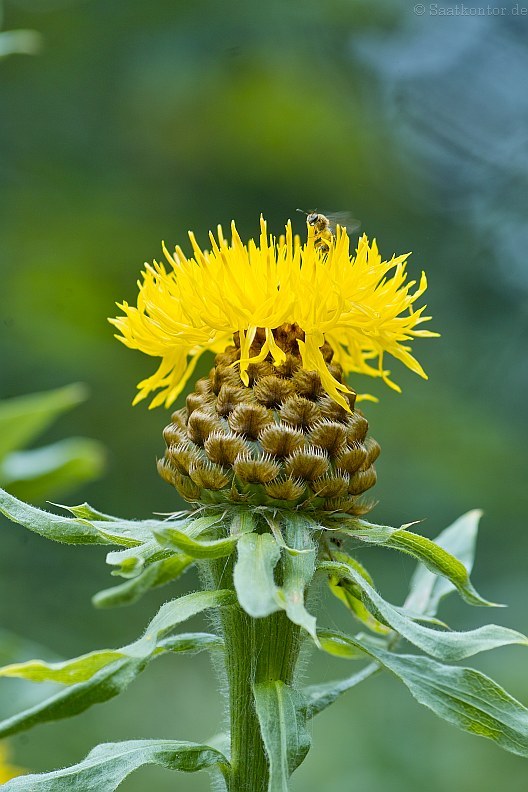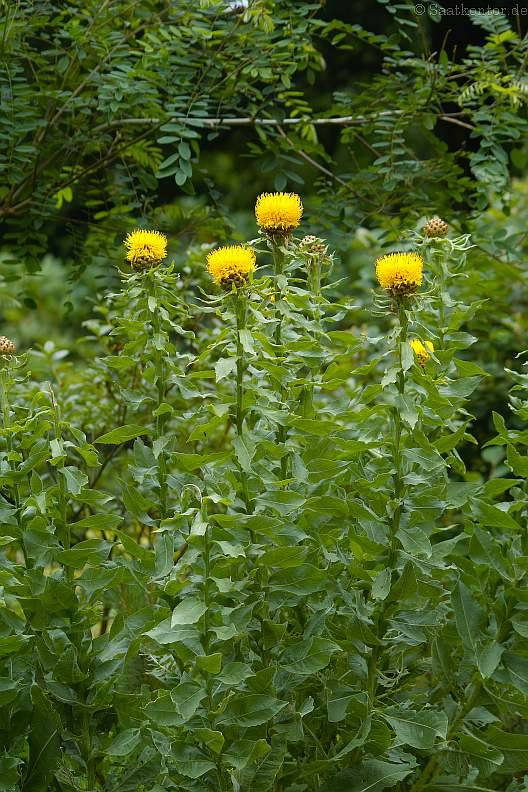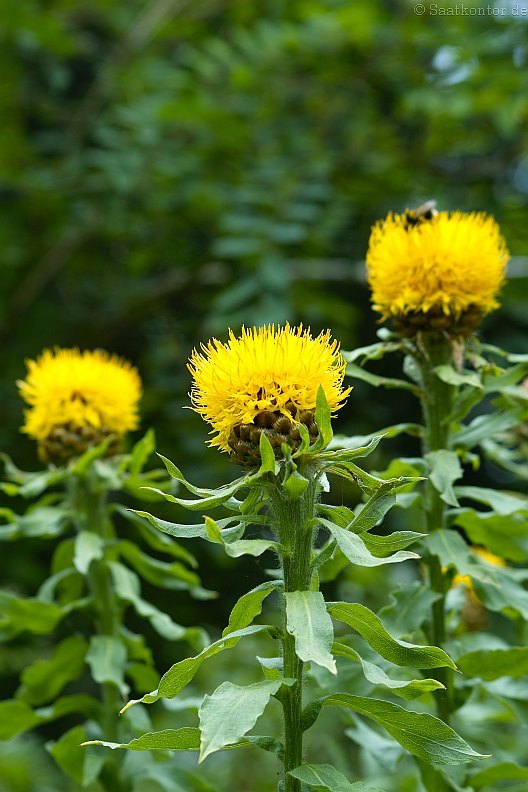#armenian basketflower'
Explore tagged Tumblr posts
Photo



Bighead Knapweed, Giant Knapweed, Armenian Basketflower / Großköpfige Flockenblume, Riesen-Flockenblume (Centaurea macrocephala) Seed source / Bezugsquelle für Saatgut: www.saatkontor.de
#bighead knapweed#knapweed#yellow#giant#armenian#basketflower#grossköpfige#flockenblume#riesen-flockenblume#perennial#flowers#blooms#centaurea#macrocephala
12 notes
·
View notes
Note
Fellow Armenian here! Just wanted to say I loved your drawing of traditional clothing, thank you for posting it! The embroidery motifs are gorgeous (omg the red dress's carpet front), especially the little golden pomegranates, and the three drawings' colors make up the flag, and you used the basketflower! Just, wow.
Aw!!! Hello! I'm so happy all the love and detailwork is noticeable! And oh man those patterns definitely took some time but I think they came out looking good too!Thanks so much for sending this message! Have a nice day!
23 notes
·
View notes
Text
18 May through 9 June 2019
I’ve been very busy these past few weeks. I’ve been working short weeks and doing a bit of travelling to Iberia for the weekends. The garden is looking fantastic. We have been receiving many compliments from the public, which is always nice to hear. Now that most of the planting is done, my part of the process kicks into high gear - to get everything labelled correctly. Nuria, our Spanish intern, is especially good at spotting spelling mistakes that have been on labels for a long time, so I try to get those printed quickly.
Here I am heading out to do one of my favourite jobs, shredding the woody material to turn into wood chips to be used on some of the paths in the garden:

On Sunday, yes, another weekend duty, I printed my very first labels on the Gravograph machine.

Plant ident by Charlotte, before she finished her traineeship, on edible seeds
Amaranthaceae Amaranthus caudatus
Araucariaceae Araucaria angustifolia
Fagaceae Fagus sylvatica ‘Dawyck’
Lamiaceae Salvia hispanica
Leguminosae Cicer arietinum
Leguminosae Lupinus mutabilis
Leguminosae Trigonella foenum-graecum
Piperaceae Piper nigrum
Poaceae Elusine coracana
Polygonaceae Fagopyrum esculentum
Plant ident by Nuria
Asparagaceae Ruscus aculeatus L.
Aspleniaceae Asplenium scolopendrium L.
Blechnaceae Woodwardia radicans (L.) Sm.
Crasulaceae Sedum album L.
Ericaceae Erica vagans 'Mrs D.F. Maxwell'
Melanthiaceae Paris quadrifolia L.
Pteridaceae Adiantum capillus-veneris L.
Rosaceae Crataegus monogyna Jacq.
Rosaceae Prunus spinosa L.
Smilaceae Smilax aspera L.
Plant of the week 24 May
Lamiaceae Salvia sclarea L.

common name(s) - clary, Europe sage, clary sage, clear eye, clear-eyes, herb clary, see-bright synonym(s) - Aethiopis sclarea (L.) Fourr.; Salvia altilabrosa Pan; S. calostachya Gand.; S. coarctata Vahl; S. foetida Lam.; S. haematodes Scop. [Illegitimate]; S. lucana Cavara & Grande; S. pamirica Gand.; S. sclarea var. calostachya (Gand.) Nyman; S. sclarea var. turkestanica (Noter) Mottet; S. simsiana Schult.; S. turkestanica Noter; Sclarea vulgaris Mill. conservation rating - Least Concern native to - southern Europe to Syria location - salvia walk, accession _____ leaves - strongly scented, wrinkled, oblong to 200mm long, with thick square stems covered in hairs flowers - long pale pink racemes with conspicuous mauve-pink bracts, in late spring and summer habit - deciduous biennial or short-lived bushy perennial to 1m tall habitat - rocky igneous slopes, mixed deciduous and coniferous woodland, shale banks and roadsides to 2,000m pests - slugs, snails, leafhoppers disease - generally disease-free hardiness - to -15ºC (H5) soil - well drained sand, loam or chalk sun - full sun propagation - seed, in pots in a cold frame in spring; sow in situ in spring pruning - often dies after flowering; do not remove flowers to allow self-seeding nomenclature - Lamiaceae - lamium - gullet (the name in Pliny refers to the gaping mouth of the corolla); Salvia - healer, salveo, salvere, the old Latin name for sage with medicinal properties (cognates are old French, saulje, sauge); sclarea - clear, medieval Latin (an old generic name for a Salvia, clary, used for eye lotions) NB - descriptions of medicinal use of the plant goes back to the writings of Theophrastus (4th century BCE), Dioscorides (1st century CE), and Pliny the Elder (1st century CE); distilled essential oil is used widely in perfumes and as a muscatel flavouring for vermouths, wines, and liqueurs; it is also used in aromatherapy.
References, bibliography:
Gledhill, David, (2008) “The Names of Plants”, fourth edition; Cambridge University Press; ISBN: 978-0-52168-553-5
IUCN [online] https://www.iucnredlist.org/species/203262/2762660 [23 June 19]
Plant List, The [online] http://www.theplantlist.org/tpl1.1/record/kew-183819 [23 June 19]
Plants for a Future [online] https://pfaf.org/user/Plant.aspx?LatinName=Salvia+sclarea [23 June 19]
Royal Horticultural Society [online] https://www.rhs.org.uk/Plants/41249/Salvia-sclarea/Details [23 June 19]
Plant of the week 31 May
Asteraceae Centaurea macrocephala Muss.Puschk. ex Willd.

common name(s) - giant knapweed, great-headed centaury, bighead knapweed, big yellow centaurea, lemon fluff, yellow bachelor's button, yellow hardhat, Armenian basketflower synonym(s) - Grossheimia macrocephala (Muss.Puschk. ex Willd.) Sosn. & Takht. conservation rating - none native to - Caucasus location - dicotyledon, accession _____ leaves - deciduous, simple or lobed leaves flowers - yellow flower-heads, opening in summer from brown buds; fruit, including its pappus, can be well over 10mm long habit - large, clump-forming perennial with mostly unbranched stems to 1.5m tall habitat - grows in mountain meadows, a summer-flowering sub-alpine species pests - generally pest-free disease - powdery mildews hardiness - to <-20ºC (H7) soil - moist and well drained sun - full sun to part shade propagation - seed sown in pots in a cold frame in spring or propagate by division in spring or autumn pruning - deadhead regularly to prolong flowering nomenclature - Asteraceae - star; Centaurea - Centaur, Centauros (mythical creature with the body of a horse replacing the hips and legs of a man, the name, used by Hippocrates in Pliny; in Ovid the centaur Chiron was cursed with this pant of Hercules’ arrow wound in the hoof); macrocephala - with large flower-heads NB - has been a garden flower for over 200 years, being introduced to the United Kingdom and United States in the early 19th century.; Thomas Jefferson obtained seeds from the nurseryman Bernard McMahon and planted them at Monticello
References, bibliography:
Gledhill, David, (2008) “The Names of Plants”, fourth edition; Cambridge University Press; ISBN: 978-0-52168-553-5
IUCN [online] http://www.iucnredlist.org/search [29 June 19]
Plant List, The [online] http://www.theplantlist.org/tpl1.1/record/gcc-75966 [29 June 19]
Royal Horticultural Society [online] https://www.rhs.org.uk/Plants/3363/Centaurea-macrocephala/Details [29 June 19]
Wikipedia [online] https://en.wikipedia.org/wiki/Centaurea_macrocephala [29 June 19]
Plant of the week 7 June
Cannaceae Canna indica L.

common name(s) - achira, Indian shot, African arrowroot, edible canna, purple arrowroot, Sierra Leone arrowroot, Queensland arrowroot; French tous-les-mois synonym(s) - (140!) Canna achiras Gillies ex D.Don; C. achiras Gill.; C. altensteinii Bouché; C. amabilis T.Koyama & Nob.Tanaka; C. ascendens Ciciar.; C. aurantiaca Roscoe; C. aureovittata Lodd.; C. barbadica Bouché [Invalid]; C. bidentata Bertol.; C. bifida Roem. & Schult.; C. brasiliensis Roscoe ex Spreng.; C. carnea Roscoe; C. cearensis Huber; C. chinensis Willd. [Illegitimate]; C. cinnabarina Bouché; C. coccinea Mill.; C. coccinea var. bicolor Kraenzl.; C. coccinea var. concolor Regel; C. coccinea f. flaviflora Chodat & Hassl.; C. coccinea var. floribunda (Bouché) Regel; C. coccinea var. limbata Regel; C. commutata Bouché; C. compacta Roscoe; C. concinna Bouché; C. crocea Roem. & Schult.; C. crocea Lag. ex Rchb.; C. densiflora Bouché; C. densifolia Bouché; C. denudata var. grandis Petersen; C. discolor Lindl.; C. discolor var. rubripunctata Nob.Tanaka; C. discolor var. viridifolia Nob.Tanaka; C. edulis Ker Gawl.; C. ehrenbergii Bouché; C. elegans Raf. [Illegitimate]; C. ellipticifolia Stokes [Illegitimate]; C. ellipticifolia var. coccinea (Mill.) Stokes; C. ellipticifolia var. lutea (Mill.) Stokes; C. ellipticifolia var. patens (Aiton) Stokes; C. ellipticifolia var. rubra Stokes; C. esculenta Loudon [Invalid]; C. exigua Bouché; C. eximia Bouché ex Horan.; C. flavescens Link; C. floribunda Bouché; C. formosa Bouché; C. fuchsina Ciciar.; C. fulgida Bouché; C. heliconiifolia Bouché; C. heliconiifolia var. xalapensis (Bouché) Kraenzl.; C. humilis Bouché; C. indica var. coccinea (Mill.) Aiton; C. indica var. coccinea Willd.; C. indica var. edwardsii Regel; C. indica var. flava (Roscoe) Baker; C. indica var. indica; C. indica var. karsteniana Regel; C. indica var. limbata (Regel) Petersen; C. indica var. lutea (Mill.) Aiton; C. indica var. maculata Hook.; C. indica var. nepalensis (Bouché) Baker; C. indica subsp. orientalis Baker; C. indica var. patens Aiton; C. indica var. rubra Aiton; C. indica f. rubroaurantiaca Makino; C. indica var. sanctae-rosae (Kraenzl.) Nob.Tanaka; C. indica var. variegata Regel; C. indica var. warszewiczii Nob.Tanaka; C. juncea Retz.; C. laeta Bouché; C. lagunensis Lindl.; C. lambertii Lindl. ex Ker Gawl.; C. lanuginosa Roscoe; C. leptochila Bouché; C. limbata Roscoe [Illegitimate]; C. lutea Mill.; C. lutea Larrañaga [Illegitimate]; C. lutea var. aurantiaca (Roscoe) Regel; C. lutea var. maculata (Hook.) Regel; C. lutea var. pallida (Roscoe) Regel; C. macrophylla Horan.; C. maculata (Hook.) Link; C. maxima Lodd. ex Roscoe [Invalid]; C. montana Blume; C. moritziana Bouché; C. nepalensis Bouché; C. nepalensis D. Dietr.; C. occidentalis Ker Gawl.; C. orientalis Bouché [Illegitimate]; C. orientalis Roscoe [Illegitimate]; C. orientalis var. flava Roscoe; C. pallida Roscoe; C. pallida var. maculata (Hook.) Roscoe; C. patens (Aiton) Roscoe; C. patens var. limbata (Regel) Baker; C. pentaphylla D.Dietr. [Spelling variant]; C. platyphylla Nees & Mart.; C. plurituberosa T.Koyama & Nob.Tanaka; C. poeppigii Bouché; C. polyclada Wawra; C. polymorpha Bouché; C. portoricensis Bouché; C. pruinosa Hoffmanns.; C. pulchra Bouché ex Horan.; C. pulchra Hassk.; C. recurvata Bouché; C. roscoeana Bouché [Illegitimate]; C. rotundifolia André; C. rubra Willd. [Illegitimate]; C. rubricaulis Link; C. sanctae-rosae Kraenzl.; C. sanguinea Bouché [Invalid]; C. sanguinea Warsz. ex Otto & A.Dietr.; C. saturate-rubra Bouché ex K.Koch; C. schubertii Horan.; C. seleriana Kraenzl.; C. sellowii Bouché; C. speciosa Roscoe ex Sims [Illegitimate]; C. speciosa Hegetschw [Illegitimate]; C. spectabilis Bouché; C. sulphurea Bouché [Invalid]; C. surinamensis Bouché; C. tenuiflora Bouché ex A.Dietr.; C. texensis Regel; C. textoria Noronha [Invalid]; C. thyrsiflora Hegetschw. [Illegitimate]; C. tinei Tod. [Invalid]; C. variabilis Willd. [Illegitimate]; C. variegata Besser; C. variegata Bouché [Illegitimate]; C. variegatifolia Ciciar.; C. ventricosa Bouché; C. warszewiczii A.Dietr. [Illegitimate]; C. warszewiczii var. flameus Ram.Goyena; C. xalapensis Bouché; Cannacorus indicus (L.) Medik.; Cannacorus ovatus Moench [Illegitimate]; Distemon brasiliensis (Roscoe ex Spreng.) Bouché; Distemon grandis Horan. [Illegitimate]; Xyphostylis lutea (Mill.) Raf. conservation rating - none native to - Central America, South America, Caribbean location - tropical corridor, accession _____ leaves - leaves to 600mm long and 180mm wide flowers - vivid orange and red, terminal, from mid-summer to mid-autumn; seeds are small, globular, black pellets, hard and dense enough to sink in water. habit - erect, herbaceous, perennial producing clumps of stems up to 3m tall; stems arise from a very large, thick and tuber-like rhizome habitat - coast and in temperate valleys of the Andes; moist or wet thickets, sometimes in rather open forest, often in secondary growth, usually at lower elevations but ascending to 2,500m pests - mealy bug, glasshouse red spider mite, aphids disease - generally disease-free hardiness - to -5ºC (H3) soil - moist and well-drained sun - full sun propagation - seed; division of the root clump as the plant comes into growth, each portion must have at least one growing point; pot up the divisions and grow them on until they are well established and then plant them out; root cuttings. pruning - leave to die back in autumn nomenclature - Cannaceae, Canna - reed; indica - from India, Indian, was used loosely for the Orient NB - Root - raw or cooked. It is the source of canna starch which is used as an arrowroot. The arrowroot is obtained by rasping the root to a pulp, then washing and straining to get rid of the fibres. This starch is very digestible. The very young tubers can also be eaten cooked, they are sweet and fibrous. The root can be very large, sometimes as long as a person's forearm. In Peru, the roots are baked for up to 12 hours by which time they become a white, translucent, fibrous and somewhat mucilaginous mass with a sweetish taste. The starch is in very large grains, about three times the size of potato starch grains, and can be seen with the naked eye. This starch is easily separated from the fibre of the root. The roots contain about 25% starch. The dry matter contains about 75 to 80% starch, 6 to 14% sugar, 1 to 3% protein, it is high in potassium, low in calcium and phosphorus. Young shoots - cooked and eaten as a green vegetable and are quite nutritious, containing at least 10% protein. The immature seeds are cooked in fat tortillas.
References, bibliography:
Gledhill, David, (2008) “The Names of Plants”, fourth edition; Cambridge University Press; ISBN: 978-0-52168-553-5
IUCN [online] http://www.iucnredlist.org/search [30 June 19]
Plant List, The [online] http://www.theplantlist.org/tpl1.1/record/kew-223906 [30 June 19]
Useful Tropical Plants [online] http://tropical.theferns.info/viewtropical.php?id=Canna+edulis [30 June 19]
Wikipedia [online] https://en.wikipedia.org/wiki/Canna_indica [30 June 19]
0 notes
Photo


Großköpfige Flockenblume, Riesen-Flockenblume / Bighead Knapweed, Giant Knapweed, Armenian Basketflower (Centaurea macrocephala) Weitere Fotos / More photos: https://saatkontor.tumblr.com/post/145124686010/
#armenian basketflower'#centaurea macrocephala#riesen-flockenblume#großköpfige flockenblume#bighead knapweed#giant knapweed#yellow flower#gelbe blüte#gelbe blumen#staude#perennial#flockenblume#gelbe flockenblume
3 notes
·
View notes
Photo

Großköpfige Flockenblume, Riesen-Flockenblume / Bighead Knapweed, Giant Knapweed, Armenian Basketflower (Centaurea macrocephala) Weitere Fotos / More photos: https://saatkontor.tumblr.com/post/145124686010/
#Großköpfige Flockenblume#riesen-flockenblume#bighead knapweed#Giant Knapweed#Armenian Basketflower'#Centaurea macrocephala#gelbe flockenblume#gelbe kornblume#goldene blüte#golden flower#perennial#staude
3 notes
·
View notes
Photo



Großköpfige Flockenblume, Riesen-Flockenblume / Bighead Knapweed, Giant Knapweed, Armenian Basketflower (Centaurea macrocephala)
#Armenian Basketflower'#centaurea macrocephala#riesen-flockenblume#großköpfige flockenblume#bighead knapweed#giant knapweed#yellow flower#gelbe blüte#gelbe blume#staude#perennial#flockenblume#gelbe flockenblume
4 notes
·
View notes